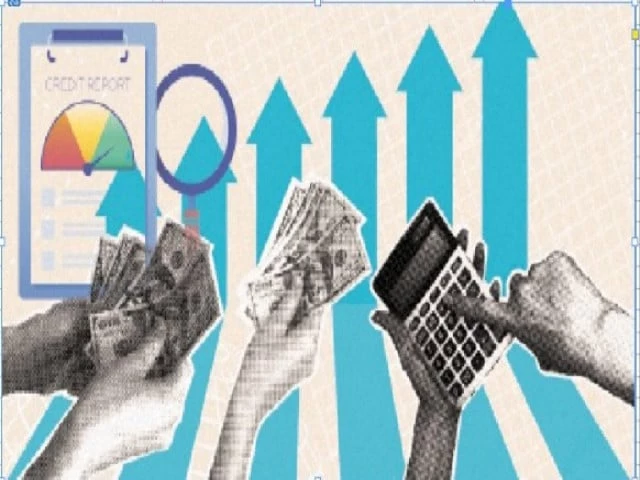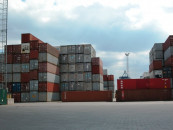S&P upgrades credit rating to B-
Projects debt-to-revenue ratio to worsen from 443% to 454% in FY2025

Standard & Poor's (S&P) credit rating agency on Thursday upgraded Pakistan's rating by a notch to B negative, which is better than the previous standing but still two positions below investment grade. The revision was made due to the implementation of reforms and a reduction in sovereign default risks.
S&P Global Ratings raised Pakistan's long-term sovereign credit rating from CCC+ to B- after a gap of two and a half years, according to an announcement made by the agency, one of the three largest global credit rating firms.
It also assigned a stable outlook to Pakistan. The upgrade improved Pakistan's credit standing from "very high credit risk, vulnerable to non-payment" to "highly speculative." Due to its junk rating, Pakistan was unable to issue international bonds in the last fiscal year to raise external debt.
S&P stated that "the coalition government led by the Pakistan Muslim League-Nawaz (PML-N) party has so far demonstrated its ability to navigate the necessary reform implementation under the International Monetary Fund (IMF) programme without significant social unrest."
The note underlined that the policymakers' willingness to maintain expenditure controls while making continued enhancements to the tax revenue base will be critical to meeting the remaining targets under the Extended Fund Facility (EFF).
The Ministry of Finance has played a key role in staying aligned with the IMF programme, often taking criticism for tough decisions needed to complete the first programme review and align the federal budget with Fund requirements.
The upgrade reflects S&P's view that Pakistan is now less reliant upon on favourable macroeconomic and financial conditions to meet its obligations. Pakistan has replenished its foreign exchange reserves over the past 12 months, and near-term default risks have declined.
However, concerns remain over exchange rate management, prompting intervention by the military establishment to curb the reemergence of the grey market.
S&P noted that the depreciation of the Pakistani rupee against the US dollar in recent years has contributed to stagnation in nominal GDP per capita. It stated that with rupee stability in the last fiscal year and rising real growth, GDP per capita is projected to exceed $2,000 by FY2027.
The agency stressed that political stability and improved security are necessary for further upgrades. However, it expects political uncertainty to remain elevated due to a fragmented political environment.
"Pakistani politics has been in a state of flux since the ouster of former Prime Minister Imran Khan of the Pakistan Tehreek-e-Insaf (PTI) party in a parliamentary no-confidence motion in April 2022."
"We believe a stable political environment in Pakistan is an important precondition to further improvements in the government's creditworthiness." While security has improved since the early 2010s, the potential for deterioration remains, it added.
Border tensions with India, as evident in the recent outbreak of hostilities in the wake of the Pahalgam terrorist attack in May 2025, can raise the spectre of miscalculations and accidental clashes that could escalate well beyond the intentions of both sides, according to S&P.
Debt servicing also remains a significant concern for the ratings agency. S&P said that Pakistan's stable outlook reflects its expectation that external support from key multilateral and bilateral partners, along with fiscal improvement, will continue over the next 12 months to meet large debt obligations.
It added that continued economic recovery and efforts to enhance revenue will stabilise Pakistan's fiscal and debt metrics.
The country's current account posted a surplus in FY2025, the first in 14 years, amounting to 0.5% of GDP. The surplus was driven by record-high remittances of $39 billion, or 9.5% of GDP, according to the agency.
These gains have improved Pakistan's external indicators and eased near-term financial pressure. Reforms under the IMF programme have also boosted tax revenues by 3% of GDP in the past year.
Combined with spending controls, S&P projects the general government deficit will decline to 5.1% of GDP in FY2026, but still above the government's budgeted target.
Inflation is expected to remain around 6.5% over the next two to three years. As a result, monetary conditions will ease further. With lower interest rates, interest payments are projected to fall to 41% of revenue over the next three years, down from over 60% in FY2024.
"Nevertheless, Pakistan's interest servicing-to-revenue ratio remains one of the highest globally among rated sovereigns," the agency noted. It added that the country's high interest expenses remain the main constraint on debt sustainability.
The debt-to-revenue ratio is projected to worsen from 443% to 454% in FY2025, according to the agency.
Future warning
"We may lower our ratings if Pakistan's external or fiscal indicators deteriorate well beyond their current levels," S&P warned.
Downward pressure would emerge if financial support from key bilateral and multilateral partners quickly erodes, or usable foreign exchange reserves fall substantially to levels indicating difficulties in servicing its external debt obligations, it added. The agency added that should interest rates surge again and materially i add to the government's already-heavy debt servicing burden, we would view that as an indication of domestic financing stress, warned the agency.




















COMMENTS
Comments are moderated and generally will be posted if they are on-topic and not abusive.
For more information, please see our Comments FAQ